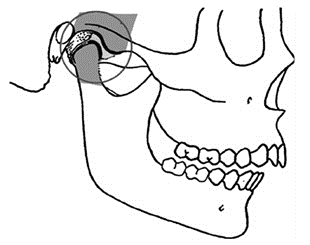By: Dr. Leonard A. Hess, DDS
Clinical Director, The Dawson Academy
The Article Originally Appeared on TheDawsonAcademy.com
Learn about Occlusion at TheDawsonAcademy.com
When we talk about utilizing bimanual manipulation as a way to get centric relation, one of the biggest misunderstandings we see is the tendency for dentists to think CR is achieved by forcing the jaw back to seat the condyles.
When we are in a situation where we have a tight patient, or patients that are resisting, the worst thing we can do is force it.
Bimanual Manipulation Provides Verification of:
- The correctness of the physiologic position
- The alignment of the condyle-disk assembly
- The integrity of the articular surfaces

Steps to Achieving Centric Relation
- Recline the patient so your arms are parallel to the floor and their chin is pointing up.
- Stabilize the patient’s head by cradling it between your rib cage and forearm. It’s essential that the head be stabilized with a firm grip so it will not move when the mandible is being manipulated.
- Lift the patient’s chin to slightly stretch the neck, keeping your forearms parallel to the floor.
- Gently position the four fingers of each hand on the lower border of the mandible. The little finger should be slightly behind the angle of the mandible. The pads of your fingers should align with the bone and stay together as if you were going to lift the head.
- Bring the thumbs together to form a C with each hand. The thumbs should fit in the notch above the symphysis. Remember, NO PRESSURE should be applied.
- With a gentle touch, and with almost zero pressure from your hands, have the patient slowly hinge open and closed in rotation (an arc of 1-2mm is acceptable), never letting the teeth touch. Do not jiggle or load the joint at this point. The whole idea here is to let the condyles go to where they physiologically want to be – properly seated in each fossa.
- When the hinge movement is consistent, the mandible will retrude automatically and you should feel the jaw go back. At that point, hold the jaw firmly on that hinge point. With proper hand placement, there is a torque effect from the thumbs and fingers that loads the joints in an upward and forward direction. This allows upward pressure to be maintained through the condyles while still allowing them to rotate freely.
- Load the joint by applying firm (but gentle) pressure UP with the fingers on the back half of the mandible and DOWN with the thumbs in the notch above the symphysis (keeping the teeth separated). Note: Sudden heavy loading can injure retrodiskal tissue and cause considerable pain. Ask the patient, Do you feel any tension or tenderness in either joint? If yes, stop and determine the cause. If no, continue.
- Increase to moderate pressure, then firm pressure. With each increment of loading, ask the patient, “Do you feel ANY tension or tenderness in either joint?”. If tension or tenderness is experienced at any load interval, stop and determine the cause.
The dense vascular connected tissue that makes up the disk will be able to handle enormous pressure through it without any sort of tenderness if you have a properly aligned condyle-disk assembly, and that condyle is completely seated.
And if the condyle is seated completely, such that the medial aspect of the condyle is engaged with the medial aspect of the glenoid fossa with a properly inter-closed disk, then there can’t be any stretching of the muscle.
What It Looks When the Condyle is Not Completely Seated in Centric
When you load test, there will be tension on that lateral pterygoid, and they will feel some tightness or fullness or a pull.
Because of this feeling, they’ll have awareness in that joint. If there’s pathology in the joint or an intracapsular problem, they’re likely to have some sort of discomfort or tenderness.
But also, remember that as we assess the joint, we’re relying on the totality of the exam; the questions that we ask, the palpation of the muscles, the load testing, the range of motion, doppler analysis, all these things that we do, to develop a visual picture of what’s going on there.
But the short answer to, how do you know if you’ve achieved centric relation, is by load testing; by load testing in three pressure increments and making sure there is no tension or tenderness in either joint.
If a Patient Has Had a Lower Block, You Can Still Put Them in Centric Relation
Anesthesia locking the trigeminal nerve really doesn’t have any effect whatsoever on whether you can achieve centric or not. Those are sensory nerves and we’re not really messing with the motor.
The fact is, we’re going to take bilateral manipulation to achieve centric relation, whether they’re numb or not. And the technique is going to be exactly the same.
You can actually achieve centric relation even if the patient is asleep. We’ve done a number of bite records while the patients were under Pentathol. It’s exactly the same as when they’re awake.
Just remember, when you’re putting a patient in centric relation, it’s the natural physiological hinge of the joint you’re looking for.
Keep Reading: Dentists: Why Should You Load Test the TMJs?


